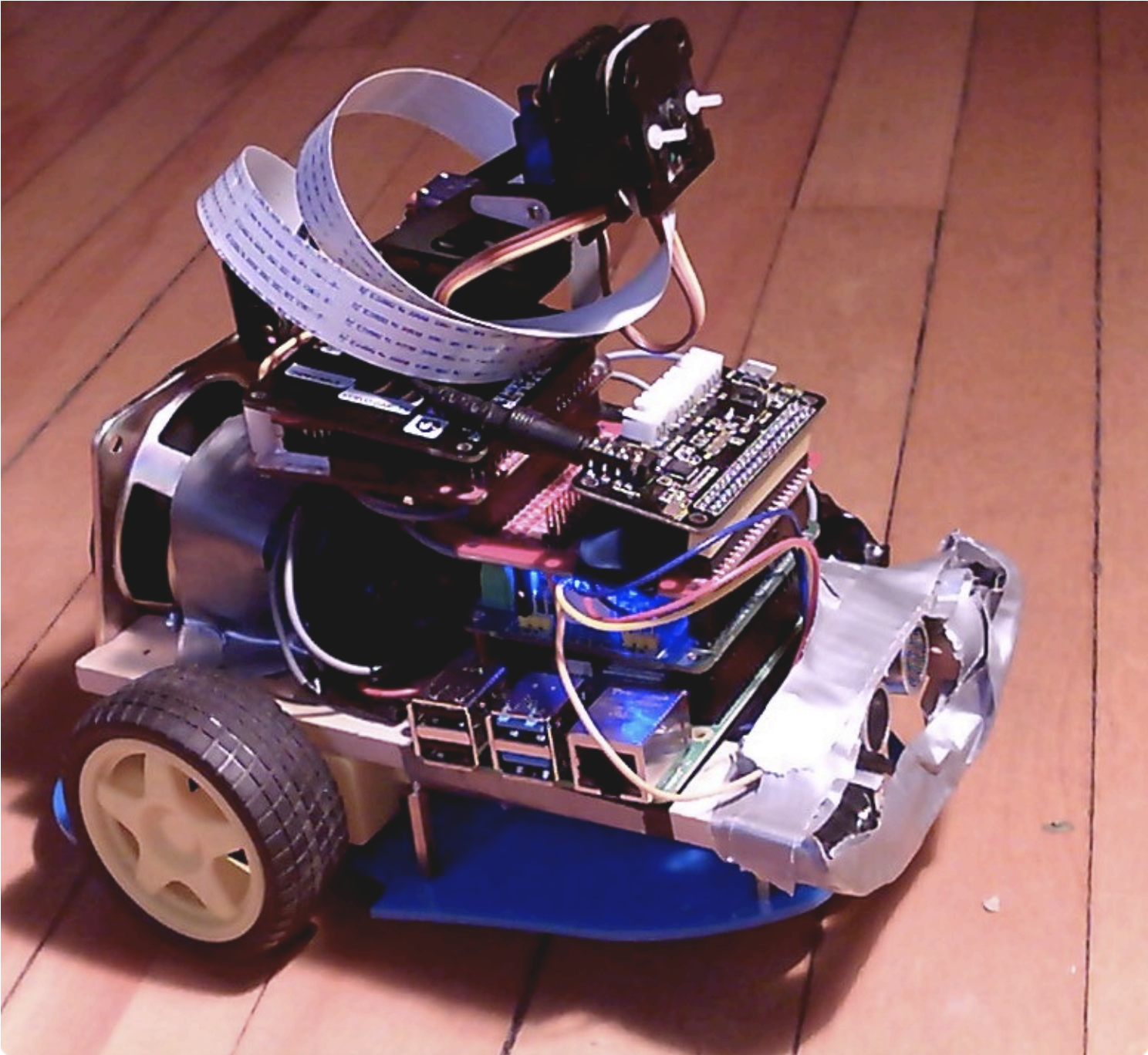Nandu Vadakkath was inspired by a line-following robot built (literally) entirely from salvage materials that could wait patiently and purchase beer for its maker in Tamil Nadu, India. So he set about making his own, but with the goal of making it capable of slightly more sophisticated tasks.
Hardware
- Raspberry Pi 4 Model B 8GB
- ReSpeaker 2-Mics HAT
- PiJuice HAT
- Motor controller board
- Raspberry Pi camera and Pimoroni Pan-Tilt HAT
- Ultrasonic distance sensor
- Infrared proximity detector
- A battery pack for the motors
Software
Nandu had ambitious plans for his robot: navigation, speech and listening, recognition, and much more were on the list of things he wanted it to do. And in order to make it do everything he wanted, he incorporated a lot of software, including:
- Python 3
- virtualenv, a tool for creating isolating virtual Python environments
- the OpenCV open source computer vision library
- the spaCy open source natural language processing library
- the TensorFlow open source machine learning platform
- Haar cascade algorithms for object detection
- A ResNet neural network with the COCO dataset for object detection
- DeepSpeech, an open source speech-to-text engine
- eSpeak NG, an open source speech synthesiser
- The MySQL database service
So how did Nandu go about trying to make the robot do some of the things on his wishlist?
Context and intents engine
The engine uses spaCy to analyse sentences, classify all the elements it identifies, and store all this information in a MySQL database. When the robot encounters a sentence with a series of possible corresponding actions, it weighs them to see what the most likely context is, based on sentences it has previously encountered.
Getting to know you
The robot has been trained to follow Nandu around but it can get to know other people too. When it meets a new person, it takes a series of photos and processes them in the background, so it learns to remember them.

Speech
Nandu didn’t like the thought of a basic robotic voice, so he searched high and low until he came across the MBROLA UK English voice. Have a listen in the videos above!
Object and people detection
The robot has an excellent group photo function: it looks for a person, calculates the distance between the top of their head and the top of the frame, then tilts the camera until this distance is about 60 pixels. This is a lot more effort than some human photographers put into getting all of everyone’s heads into the frame.
Nandu has created a YouTube channel for his robot companion, so be sure to keep up with its progress!
The post Nandu’s lockdown Raspberry Pi robot project appeared first on Raspberry Pi.
from Raspberry Pi https://ift.tt/2R0Tjij


No comments:
Post a Comment
Please do not enter any spam link in the comment box.